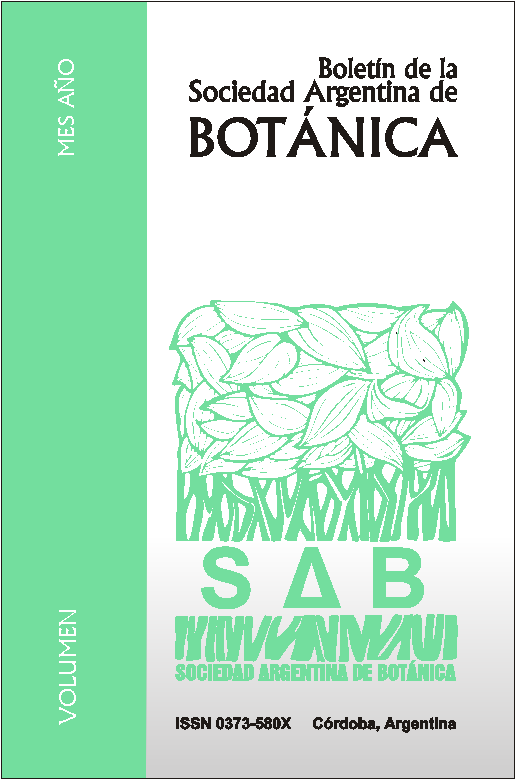Cytological mechanisms involved in the unreduced male gametes production in diploid individuals of Turnera sidoides subsp. carnea (Passifloraceae).
DOI:
https://doi.org/10.31055/1851.2372.v49.n2.7854Keywords:
Turnera sidoides, poliploidy, unreduced gametes, meiosis, pollen viabilityAbstract
Cytological mechanisms involved in the unreduced male gametes production in diploid individuals of Turnera sidoides subsp. carnea (Passifloraceae). Turnera sidoides (x = 7) is an autopolyploid complex of outcrossing perennial herbs that includes five subspecies, with ploidy levels from diploid (2n = 2x = 14) to octoploid (2n = 8x = 56). Previous studies have revealed the production of unreduced male gametes (2n and 4n) in diploid populations of this complex, suggesting that sexual polyploidyzation would be the main mechanism involved in the origin of neopoliploids of T. sidoides. However, to date, there is a lack of data about the cytological mechanisms involved in the origin of such unreduced gametes. Thus, in this paper we analyze the meiotic behaviour and pollen viability of unreduced gametes producers from a diploid population of T. sidoides subsp. carnea. The results obtained showed that meiotic behavior was mostly regular; however some irregularities such as parallel spindles, fused spindles and nuclear restitution were also observed. Pollen viability varied from 44.75% to 95.82%. Overall, our results suggest that nuclear restitution at both the first and the second meiotic division would be the cytological mechanisms involved in the production of 2n male gametes. Such mechanisms would have important consequences in the establishments of neopolyploids in natural populations.
Downloads
Downloads
How to Cite
Issue
Section
License
Provides immediate and free OPEN ACCESS to its content under the principle of making research freely available to the public, which fosters a greater exchange of global knowledge, allowing authors to maintain their copyright without restrictions.
Material published in Bol. Soc. Argent. Bot. is distributed under a Creative Commons Attribution-NonCommercial-ShareAlike 4.0 International license.









